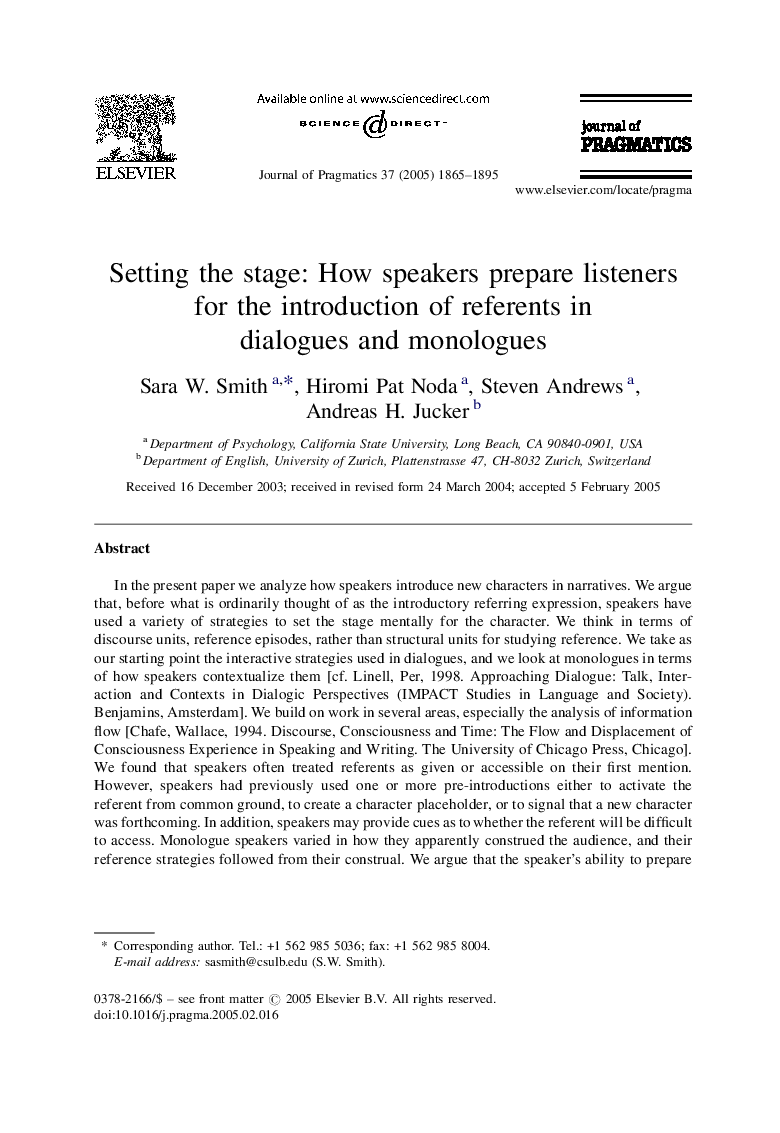| Article ID | Journal | Published Year | Pages | File Type |
|---|---|---|---|---|
| 10460247 | Journal of Pragmatics | 2005 | 31 Pages |
Abstract
In the present paper we analyze how speakers introduce new characters in narratives. We argue that, before what is ordinarily thought of as the introductory referring expression, speakers have used a variety of strategies to set the stage mentally for the character. We think in terms of discourse units, reference episodes, rather than structural units for studying reference. We take as our starting point the interactive strategies used in dialogues, and we look at monologues in terms of how speakers contextualize them [cf. Linell, Per, 1998. Approaching Dialogue: Talk, Interaction and Contexts in Dialogic Perspectives (IMPACT Studies in Language and Society). Benjamins, Amsterdam]. We build on work in several areas, especially the analysis of information flow [Chafe, Wallace, 1994. Discourse, Consciousness and Time: The Flow and Displacement of Consciousness Experience in Speaking and Writing. The University of Chicago Press, Chicago]. We found that speakers often treated referents as given or accessible on their first mention. However, speakers had previously used one or more pre-introductions either to activate the referent from common ground, to create a character placeholder, or to signal that a new character was forthcoming. In addition, speakers may provide cues as to whether the referent will be difficult to access. Monologue speakers varied in how they apparently construed the audience, and their reference strategies followed from their construal. We argue that the speaker's ability to prepare the audience incrementally is a further example of intersubjectivity and an important part of communicative competence.
Related Topics
Social Sciences and Humanities
Arts and Humanities
Language and Linguistics
Authors
Sara W. Smith, Hiromi Pat Noda, Steven Andrews, Andreas H. Jucker,
